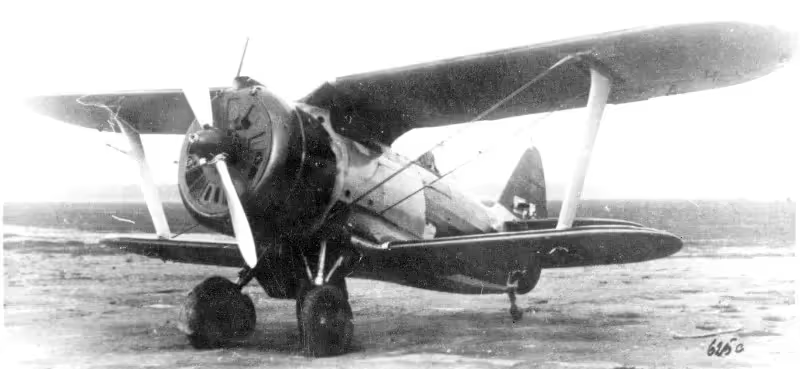Warplanes of Russia: Polikarpov I-153 biplane fighter
Polikarpov I-153 biplane fighter

(SA-kuva Photo)
Polikarpov I-153 captured by Finnish forces after a forced landing. Photo taken in June, 1941.
The Polikarpov I-153 Chaika (Russian Чайка, "Seagull") is a late 1930s Soviet sesquiplane fighter. Developed from the I-15 with a retractable undercarriage, the I-153 fought in the Soviet-Japanese combats in Mongolia and was one of the major Soviet fighter types in the early years of the Second World War. Three I-153s are still in flying condition. The I-153 is powered by the Shvetsov M-62 radial engine.
The I-153 first saw combat in 1939 during the Soviet-Japanese Battle of Khalkin Gol in Mongolia. The Japanese Army Air Forces' Type 97 Fighter (Nakajima Ki-27) Nate proved a formidable opponent for the I-15bis and I-16, but was more evenly matched with the I-153, which retained agility inherent to biplanes while having improved performance.
While the overall I-153 performance was satisfactory, some significant problems were revealed. Most troublesome was the absence of a firewall between the fuel tank mounted in front of the cockpit and the pilot. Combined with strong draft coming in through the wheel wells, fuel tank fires invariably resulted in rapid engulfment of the cockpit and severe burns to the pilot. In addition, the M-62 engine suffered from a service life of only 60–80 hours due to failures of the two-speed supercharger.The Polikarpov I-153 Chaika never flew with any Spanish Air Force units during or after the Spanish Civil War. Two earlier variants of this aircraft, the I-15 and the I-15bis, did fly with the Republican Air Force during the conflict and, later, captured examples of both types were used by the Fuerzas Aéreas till the early 1950s. (Wikipedia)

(Yevgeny Khaldei Photo)
Polikarpov I-153 Chaika.
Polikarpov Design Bureau was a Soviet OKB (design bureau) for aircraft, led by Nikolai Nikolaevich Polikarpov. Dux Factory was acquired by the USSR and became part of Polikarpov.After the death of Polikarpov on 30 July 1944 at the age of 52, his OKB was absorbed into Lavochkin, but with some of its engineers going to Mikoyan-Gurevich and its production facilities going to Sukhoi. For a long time the Polikarpov OKB headquarters were located at Aircraft plant #1 (formerly Dux Factory) in Moscow, where its purpose-built building still stands.

(SDASM Photo)
Polikarpov I-153 Chaika.

(Michael Rehbaum Photo)

(Tomas Del Coro Photo)
Polikarpov I-153 Chaika (Serial No. 6316) Chaika, 1938, 2nd Aviation Fighter Squadron of the Northern Navy, Military Aviation Museum, Virginia Beach, Virginia.

(AeroPsico Photo)
Polikarpov I-153, Reg. No. EC-LJL, Spain.

(Jeff Gilbert Photo)
Polikarpov I-153, Reg. No. ZK-JJB, New Zealand.

(Jeff Gilbert Photo)
Polikarpov I-153, Reg. No. ZK-JKM, New Zealand.
.avif)
(SDASM Photo)
Polikarpov I-153 Chaika, Musee du Bourget, Paris, France.

(Pline Photo)
Polikarpov I-153 Chaika, Musee du Bourget, Paris, France.
.avif)
(Anna Svereva Photo)
Polikarpov I-153 Chaika, Reg. No. RA-1562G.

(Ilanko Jori Photo)
Polikarpov I-153 Chaika in Finnish Air Force service.





